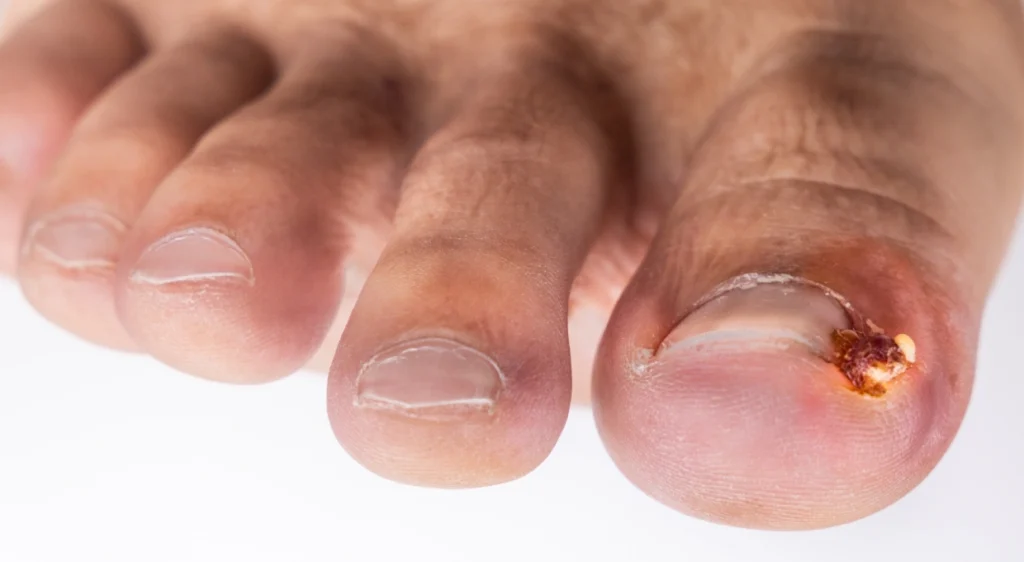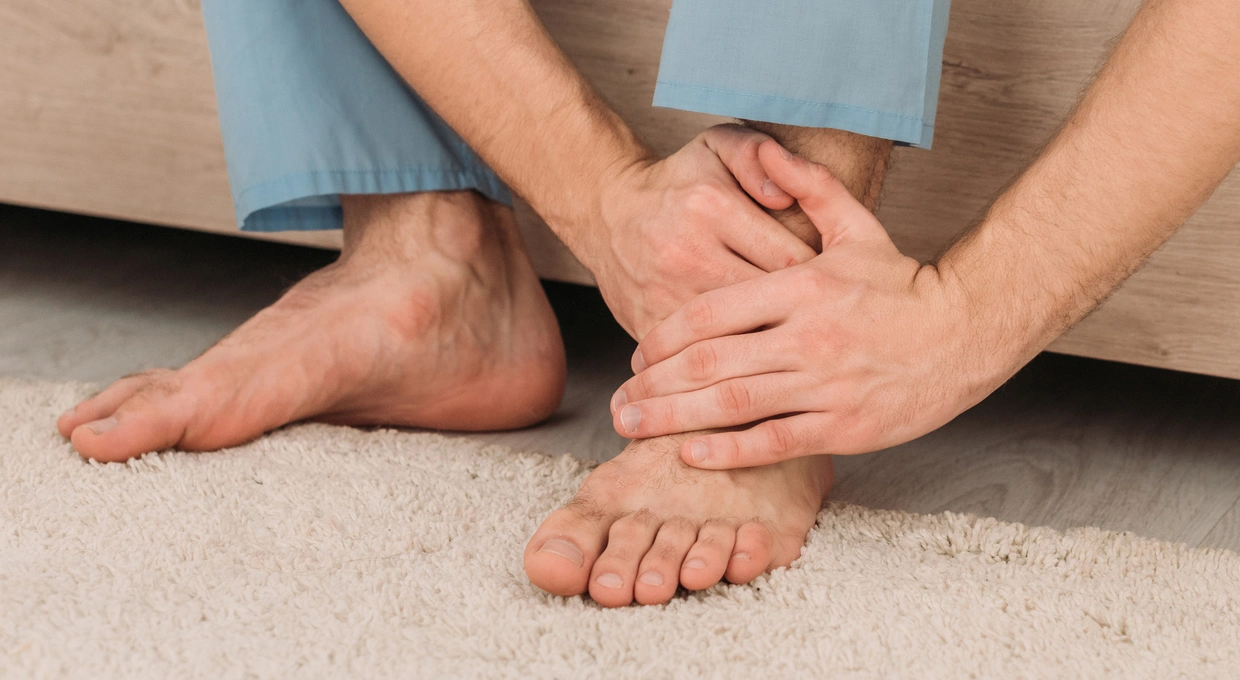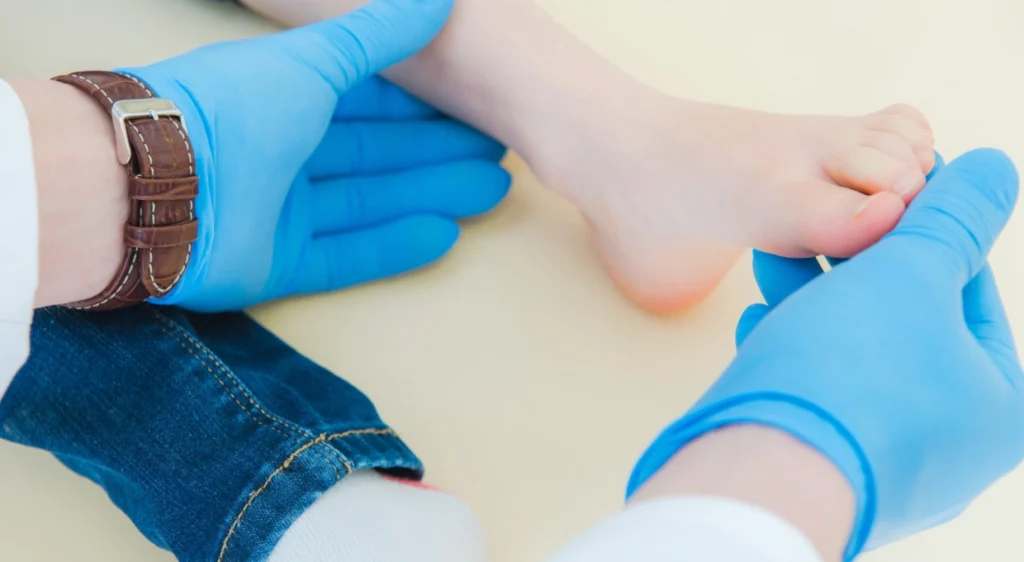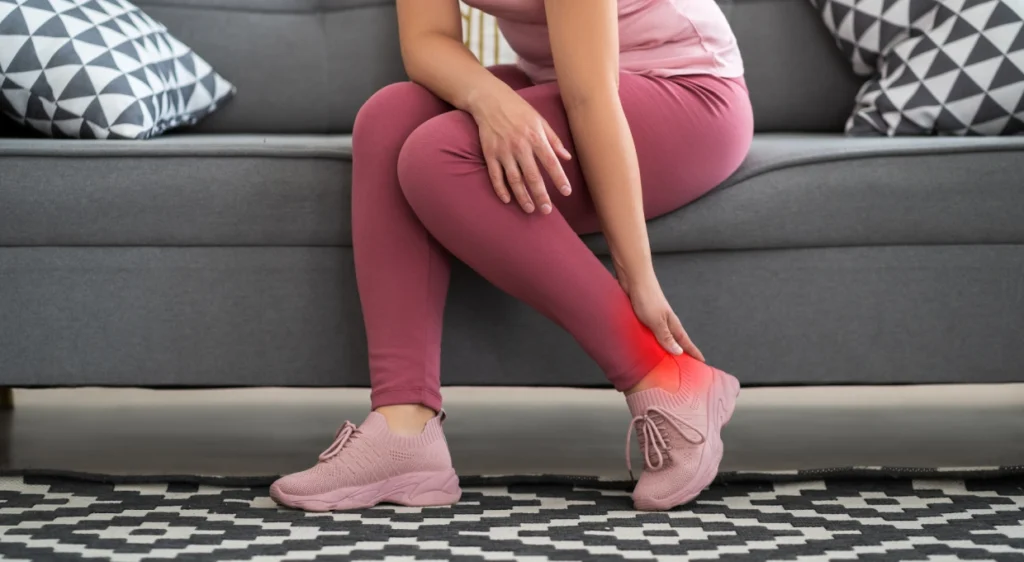The feet and ankles, although often overlooked, are critical to our mobility and overall well-being. These complex structures can suffer from a variety of ailments that are not related to direct injury. In this article, we will explore some of the most common conditions affecting the feet and ankles, including skin problems, joint ailments and neurological problems, highlighting how Clínica San Román, with over 40 years of experience, can help you manage them.
Skin Ailments of the Feet and Ankles
The skin of the feet and ankles can be susceptible to various conditions that cause discomfort and cosmetic problems. Among the most common are:
Corns and Blisters
Corns and blisters are common responses to constant rubbing and pressure on the skin. Corns form as areas of hard, thick skin, usually on the heels and soles of the feet, due to repeated friction. Blisters, on the other hand, are fluid-filled pockets that develop from intense friction or improper footwear.
Mushrooms
Fungal infections, such as athlete’s foot, are quite common. This condition is caused by fungal growth in moist environments, such as sweaty shoes. Symptoms include itching, redness, and peeling of the skin.
Dermatitis
Dermatitis can manifest itself on the feet and ankles as an allergic or irritant reaction. It can be caused by chemicals in shoes, socks or skin care products, and presents with redness, itching and sometimes blistering.
Ingrown Nails

Ingrown toenails occur when the edge of a toenail, usually from the big toe, grows into the surrounding skin. This can cause pain, redness and swelling. It is often due to improper nail trimming or wearing shoes that are too tight.
Infections
Bacterial infections can develop in wounds or irritated areas of the feet. If not treated properly, they can lead to serious complications, including cellulitis and abscesses.
Foot Joint Ailments
The joints of the foot can also be prone to a variety of problems that affect mobility and cause pain:
Arthritis
Arthritis in the feet can be particularly debilitating, affecting the joints and causing inflammation and pain. Rheumatoid arthritis and osteoarthritis are the most common forms affecting the feet.
Plantar fasciitis
Plantar fasciitis is an inflammation of the thick tissue on the sole of the foot, which connects the heel to the toes. This condition causes severe pain in the heel, especially when getting up in the morning or after periods of inactivity.
Bunions
Bunions are deformities in the joints of the big toe, which can be painful and limit mobility. They often develop due to genetics, but improper footwear can also be a contributing factor.
Neurological Problems
Neurological problems in the feet can affect nerve function and cause uncomfortable or painful symptoms:
Morton’s neuroma
Morton’s neuroma is a painful condition that affects the nerves between the toes, most commonly between the third and fourth toes. It feels like there is a small stone in the shoe, and causes pain and numbness.
Peripheral Neuropathy
Peripheral neuropathy can affect the feet, causing pain, numbness and a tingling sensation. This condition is often a complication of diabetes, but can also result from other diseases and conditions.
Call to Action
At Clínica San Román, we have more than 40 years of experience in the treatment of foot and ankle problems. Our team of professionals is specialized in advanced and minimally invasive techniques to improve your quality of life. Don’t wait any longer to treat your foot and ankle problems! Schedule your appointment today and find out how we can help you. For more information about podiatric treatments and care, visit Clínica San Román‘s blog.
Conclusion
Foot and ankle problems can significantly affect quality of life, but with proper diagnosis and specialized treatment, it is possible to find relief and improve foot function. Clínica San Román specializes in the comprehensive management of these conditions, offering personalized and effective solutions. Maintaining good podiatric health is essential, and we are here to help you every step of the way.



